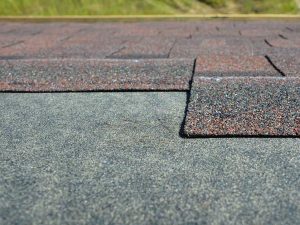Your choice of underlayment plays an integral role in ensuring your roof’s durability and protection against the elements. Among the options available, synthetic and felt underlayment stand out as popular choices. In this blog, we’ll delve into the characteristics of both synthetic and felt underlayment to determine which emerges as the better option for your house roof.

Understanding Roofing Underlayment
But first, let’s take a look at what the underlayment actually is. It is an additional layer of protection between your roof and the external weather conditions. Installed right on top of the decking prior to laying down the outer roof covering, it serves as a critical barrier against moisture and water penetration, which are leading causes of roof damage.
Felt Underlayment: The Traditional Choice
Felt underlayment, often known as tar paper or felt paper, is made from either organic or fiberglass substrate coated with asphalt. It has been a traditional choice for many homeowners due to its affordability and availability. However, it has its limitations. For one, it can absorb moisture, leading to wrinkling that compromises its effectiveness as a water-resistant barrier. In terms of roof cost, felt may not be as expensive upfront, but the potential for more frequent replacements should be considered when calculating long-term expenses.
Synthetic Underlayment: The Modern Solution
Synthetic underlayment is constructed from polymers, making it lightweight yet highly durable and resistant to water. Unlike felt, synthetic materials do not absorb water, do not wrinkle, and can offer enhanced protection against UV rays if exposed temporarily during installation. While the upfront roof cost associated with synthetic underlayment may be higher compared to felt, its durability and protective qualities can offer significant savings over time by minimizing the need for repairs or early replacement.
Weighing the Pros and Cons
Here’s a look at the advantages and disadvantages of felt underlayment:
-
Advantages: Lower initial cost, widely available, and has a heavier weight which some roofers prefer for stability during installation.
-
Disadvantages: Absorbs moisture leading to potential decking damage, less durable against physical impacts, and can degrade faster under extreme weather conditions.
Meanwhile, here are the pros and cons of its synthetic counterpart:
-
Pros: High durability, excellent moisture resistance, lighter weight for easier handling, and longer lifespan which can complement the longevity of modern roofing materials.
-
Cons: Higher initial cost and the requirement for professional installation to ensure optimal performance.
Working With a Reliable Roofer
When deciding between synthetic and felt roofing underlayment, it’s important to consider the immediate and long-term implications on your roof’s performance and weather protection. As a trusted roofing company, Premier Systems Roofing can guide you through the specifics of your home’s roofing needs, taking into account local weather patterns, roofing materials, and your budget.
To get started on your roof repair or replacement project, give us a call at (605) 361-4955. You may also fill out our contact form to request an estimate.



